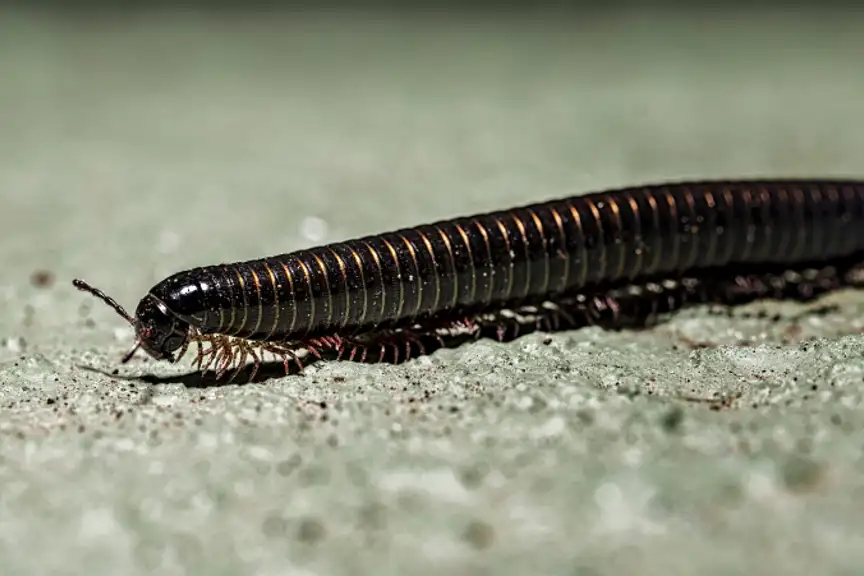Millipede Control in Your Garden


Millipedes are small, long and cylindrical, generally 20-45mm long, however some Australian native species can reach up to 20cm long. Millipedes have a heavily segmented body with 2 pairs of legs per body segment and a short pair of antennae on the head. While the direct translation of 'Milli' 'pede' is 'thousand' 'legs', the highest record for legs found on a millipede is only 750.
Most millipedes are beneficial in the garden, they help improve the soil by feeding on organic matter, however, some turn to feeding on plants. Millipedes are mostly solitary, however, some develop and congregate into large swarms, such as the introduced species 'Portuguese Millipede', making them a real nuisance in the garden and in homes.
Portuguese Millipedes are easily identified by their smooth, black and shiny body. As a defence behaviour, Portuguese Millipedes coil themselves into a tight and uniform ball to protect their vulnerable underside. Many millipede species secrete foul smelling and sometimes irritating chemicals to deter predators. These secretions can also damage items of the home, especially fabrics and carpets.
Portuguese Millipedes are usually active during Spring and Autumn and are most prevalent after drought-breaking rains. Millipedes are mostly nocturnal and are often attracted to home and garden lighting.
Females lays large numbers of eggs into moist soil. Eggs hatch into juveniles which are similar to adults, only smaller and with less segments. Unlike most native millipede species, 'Portuguese Millipedes' can develop into plague proportions.
Moist areas with plenty of dead organic material, mosses, lichens, and fungi used for food and shelter. Most native species live in forests, however, Portuguese Millipedes are common in home gardens.
Beetles, scorpions, spiders, nematodes, some fly species.